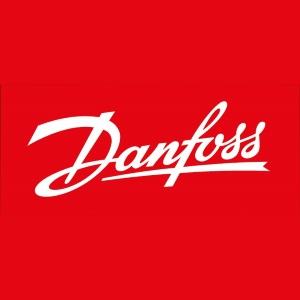Increasing temperatures, population growth, urbanization, and rising incomes are driving the increased need for cooling. According to the first-ever Global Cooling Watch Report, launched at COP28, cooling demand could triple by 2050.
This would lead to a doubling of greenhouse gas emissions by 2050, which is equivalent to more than the total annual greenhouse gas emissions of the United States of America.
sustainable cooling pledge
Recognizing the need to act on cooling, Danfoss joined forces with over 60 governments and other pioneering corporations to endorse a global pledge in support of sustainable cooling, launched at COP28 in Dubai.
Led by the COP28 UAE Presidency, the Global Cooling Pledge sets out a series of commitments by governments that will accelerate emission reductions from energy use and refrigerants towards near-zero emission cooling in 2050.
climate-friendly cooling technologies
The commitments made by governments through the Global Cooling Pledge are a brave step"
Jürgen Fischer, President, of Danfoss Climate Solutions, said, “Cooling is one of the biggest societal opportunities of our time. It’s needed everywhere to cool our food, our buildings, and our vaccines."
"It brings health, growth, and food security to the world’s population. The commitments made by governments through the Global Cooling Pledge are a brave step, but we must see them take action, implement the technologies readily available, and spread sustainable, energy-efficient, and climate-friendly cooling technologies around the globe."
Energy demand
"Action is needed to limit global warming to 1.5°C.” Cooling our buildings is an important driver of cost and emissions.
Already, keeping buildings cool represents over 50% of electricity consumption from cooling and it is also the most important driver for peak electricity demand. Energy demand, just from cooling our homes, is expected to grow threefold by 2050 if no measures are taken.
District cooling
Chilled water is supplied from a central, electrically powered chiller and circulated to buildings through pipelines
District cooling is one of the most promising and efficient ways to cool and decarbonize buildings. It typically saves up to 50% of energy compared to conventional cooling systems.
In most cases, chilled water is supplied from a central, electrically powered chiller and circulated to buildings through pipelines.
Thermal storage
Thermal storage opportunities in district cooling networks enable shifting cold-water production away from peak hours and adapting to variable renewable energies.
Centralized plants help professionalize refrigerant management and support the move towards more climate-friendly refrigerants. From an urban planning perspective, heat islands, noise, and space requirements can be avoided.
Building a safe and sustainable cold chain
Cold chain and refrigeration applications as electricity use is set to grow significantly
Similar trends are expected for cold chain and refrigeration applications as electricity use is set to grow significantly with the much-needed expansion of the cold chain to provide food, medicine, and vaccines for a growing population.
The good news is that near-zero emission cooling is possible. Emissions in 2050 could be cut by 97% with readily available technology: one-third could already be achieved by compliance with the Kigali Amendment to the Montreal Protocol, the most important driver to reduce refrigerant emissions and state-of-the-art energy efficiency.
Reduced electricity use
The remainder could be reached by stepping up actions on energy efficiency and refrigerants, reducing the need for cooling, and fully decarbonizing the grid.
End users could save $1 trillion per year by 2050 due to reduced electricity use. Reduced peak loads on electricity networks would translate to a reduction in peak electricity demand between 1.5 TW and 2 TW, resulting in $4 trillion to $5 trillion in savings by 2050.
environmentally friendly refrigerants
Technologies and solutions to reduce cooling-related emissions are already in use around the world"
“Combining high energy efficiency in cooling with the transition to more environmentally friendly refrigerants is a very powerful way to reduce emissions and cost. District cooling and the phase-out of refrigerants with a high impact on global warming are just two examples of many that can make a major difference."
"Technologies and solutions to reduce cooling-related emissions are already in use around the world, and I urge the pioneers behind the Global Cooling Pledge to see them into action. Seeing is believing,” says Fischer.
increasing energy efficiency
Andrea Voigt, Head of Global Public Affairs, at Danfoss Climate Solutions, concludes, “There’s ample evidence that policies aimed at phasing down high global warming potential refrigerants combined with measures to increase energy efficiency will lead to tangible results."
"Training is another crucial, yet often neglected success factor. At Danfoss, we look forward to collaborating with our customers and governments to create sustainable ecosystems ranging from hardware and software solutions to training and adequate policies that will make the energy and refrigerant transition a success for all.”

















